How pineapple and linen will make your next car more eco-friendly
The Renault Emblème is a rolling laboratory for the eco-friendly car of the near-future
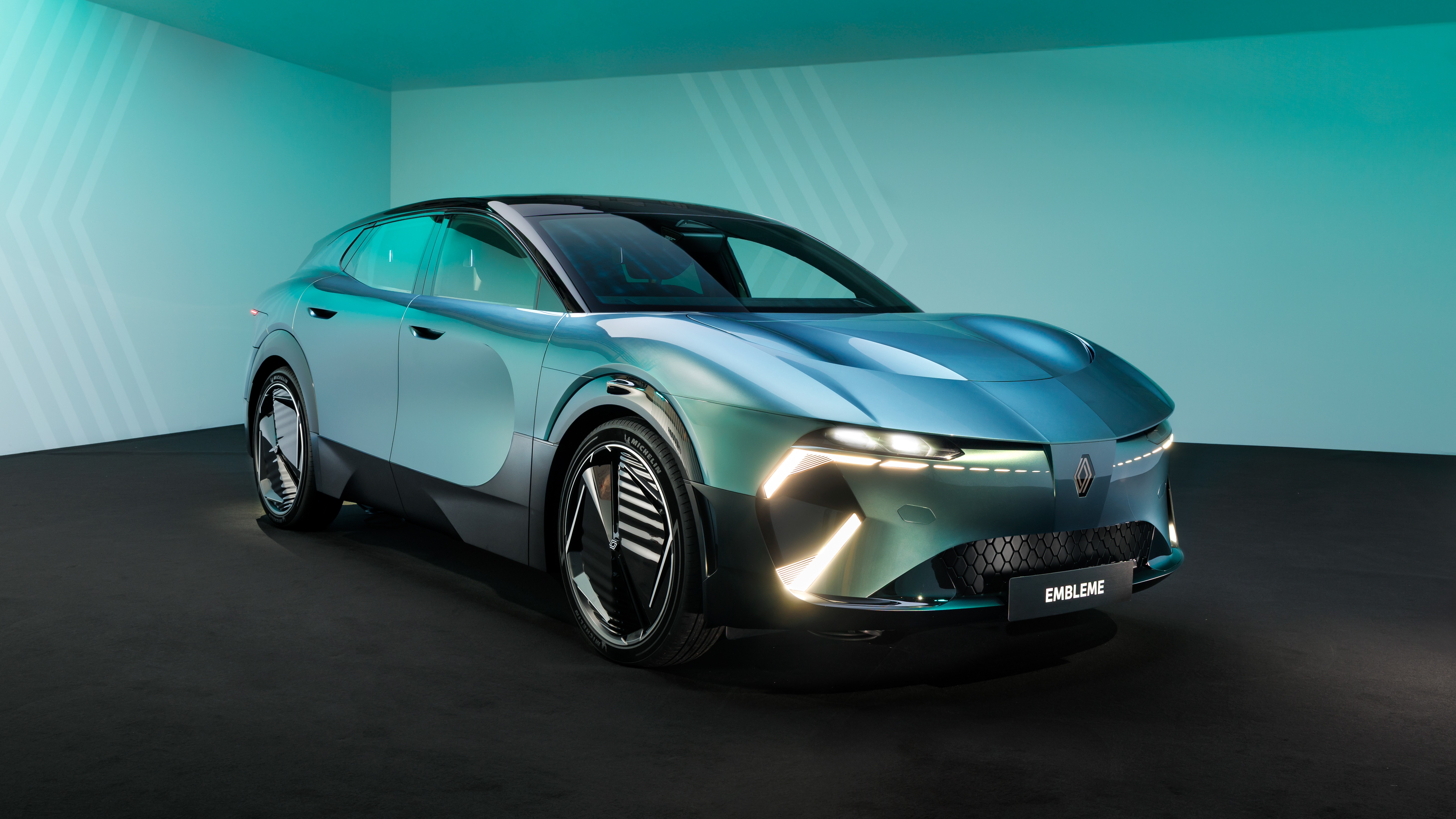

QUICK SUMMARY
Renault's new Emblème is a concept car that aims to reduce the lifetime CO2 production of a car by 90%, compared to a car from 2019.
It is also highly recyclable and uses parts that have themselves already been recycled.
It should be easy to say how electric cars are better for the planet than a petrol or diesel alternative. Just point at where the exhaust pipe used to be, and marvel at the lack of emissions.
But it isn’t quite as simple as that. Because, while an EV produces no local emissions – and is therefore much better for the lungs of every cyclist it passes – that’s only half the story. While the visible toxins are the easiest to understand, manufacturing and recycling any car still releases many tonnes of carbon dioxide into the atmosphere.
This is where a process called life cycle analysis (LCA) and the term ‘cradle-to-grave’ come in. The latter measures how much CO2 is produced at every stage, then uses a measurement called tonnes of CO2 equivalent to give it some real-world context.
With the Renault Emblème you see on this page, the French carmaker is seeking to reduce the Co2eq of a car’s entire cradle-to-grave lifespan by 90%.
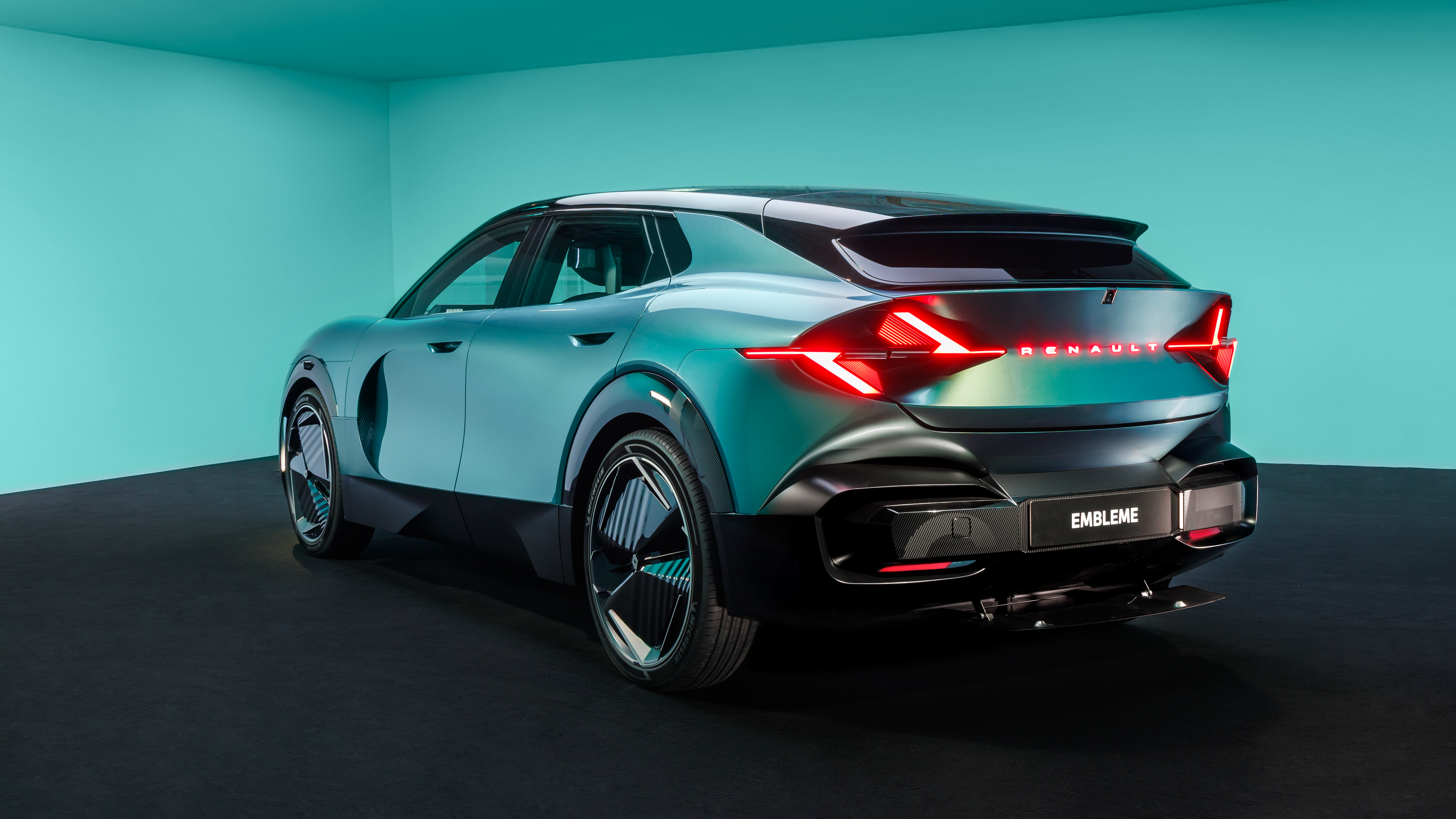
Renault is using a 2019 Captur and its 50 tonnes of Co2eq (over a lifetime of 15 years and 124,000 miles) as a benchmark. Switching to a similarly sized EV, like the Renault Megane E-Tech, halves this figure to 25 tonnes over an equal lifetime. That’s a 50% saving right away, although some assumptions have been made on how the electricity used to power the car is created, and how that might improve over its lifetime.
The remaining 40% is trickier to eradicate, but with the Emblème, Renault is giving it a go – and I recently got up close and personal with the prototype to find out exactly what’s going on.
Firstly, the drivetrain. Renault says that, should it enter production and hit that 90% reduction target, the Emblème would be powered by a hybrid system that uses an electric motor, a 40 kWh battery and a 30 kW hydrogen fuel cell. Yes, I know. Hydrogen might work on paper, but there being almost no public refuelling stations makes this a bit of a non-starter.
Sign up to the T3 newsletter for smarter living straight to your inbox
Get all the latest news, reviews, deals and buying guides on gorgeous tech, home and active products from the T3 experts
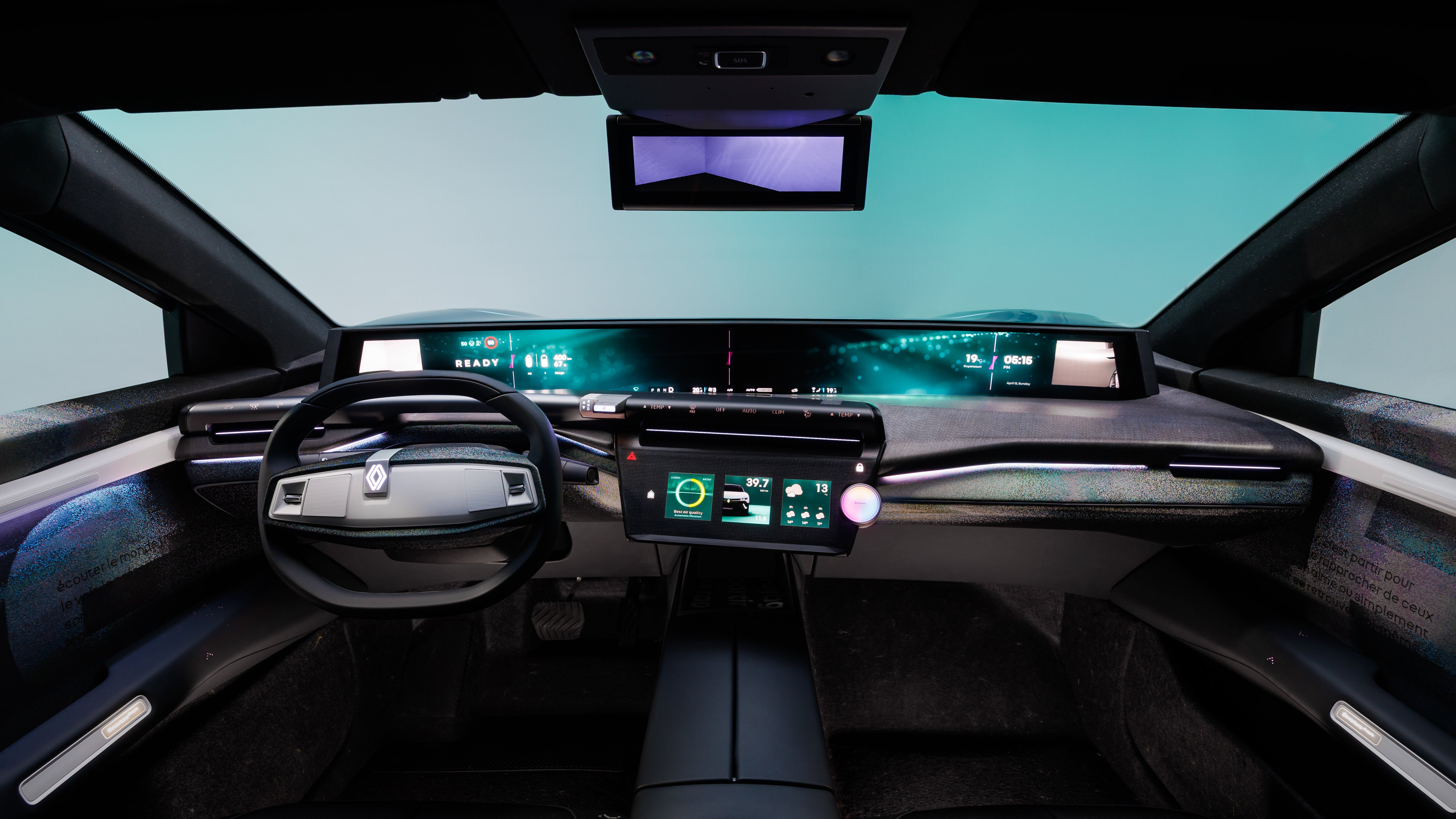
Renault might truly believe in hydrogen, but it's hard to see how the tide might shift enough in its favour to make fuel cell EVs a reality in the next decade.
In any case, the Emblème's most interesting carbon-saving is found elsewhere. With help from a wide range of automotive parts suppliers, Renault says producing the Emblème would create 70% less Co2eq than the 2019 Captur benchmark. The car is more than 50% recycled, and is over 90% recyclable, Renault says, while appearing closer to reality than what’s normal from supposedly groundbreaking show cars.
To that end, Renault brand CEO Fabrice Cambolive said: “The ambition of the Renault Emblème project was to achieve maximum decarbonisation by designing a car that is attractive, efficient, family-friendly, comfortable, high-tech and versatile in use. More than a concept car, it’s a demo car on the road that’s a pleasure to look at, to be in and to drive – a real invitation to travel”.
Back to that remaining 40% of Co2eq saving. Automotive parts supplier Forvia has cut the Co2eq from the cradle-to-grave of the Emblème’s interior by 72%. It's also cut the weight of interior components by 10%, replacing materials with alternatives that are 38% bio-sourced, 46% recycled and produced using 80% green energy.
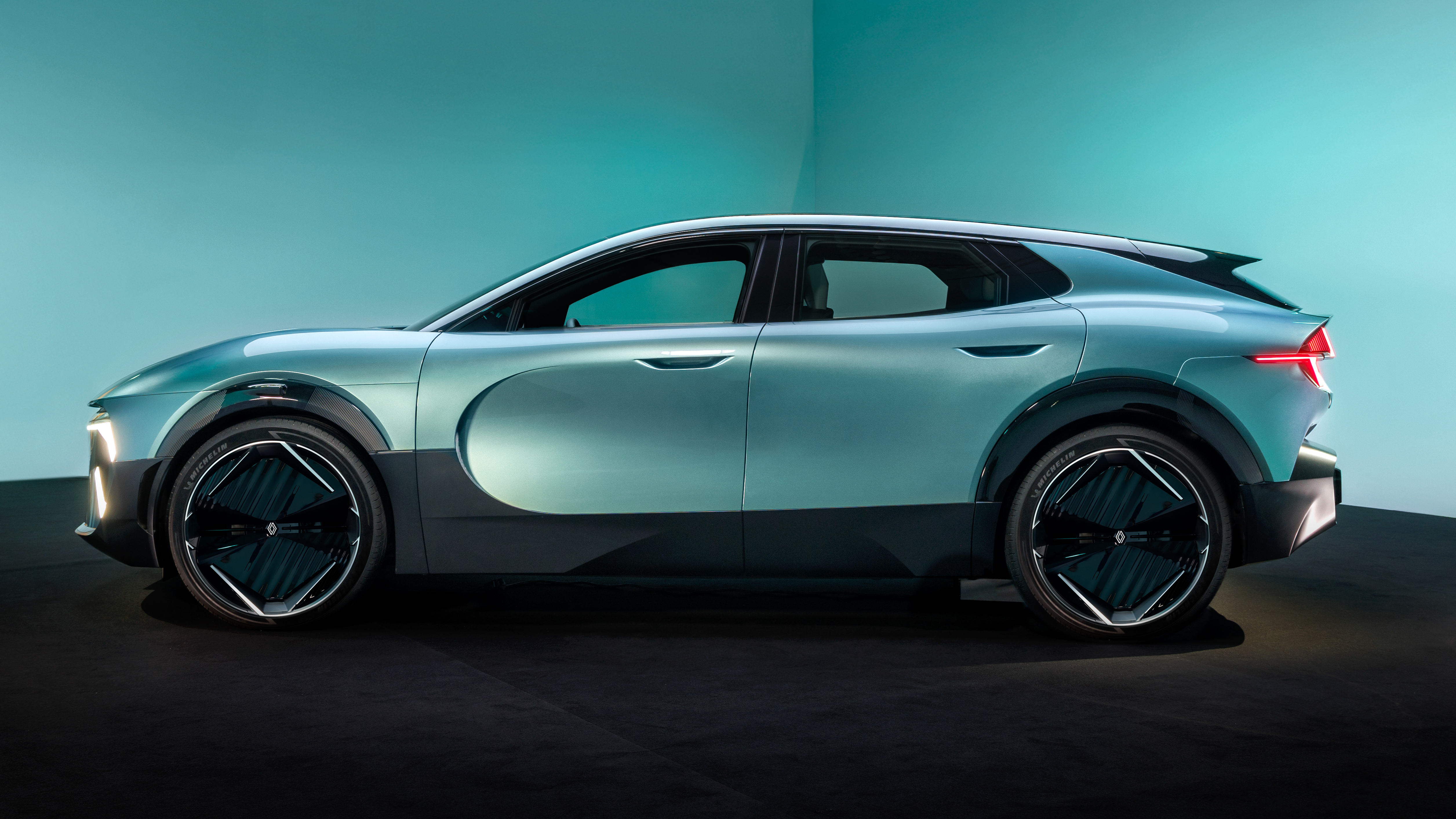
Some of these bio-sourced materials include hemp fibres for adding strength, pineapple leaf fibre for the hard-wearing fabric of the door cards, centre console and lower dashboard panels, and French linen for the softer, more decorative upper dashboard. You might remember that the Volkswagen Fox, a budget hatchback from the mid-2000s, also used pineapple for its parcel shelf.
In all, the interior Co2eq figure has been cut from 122 kg for the Megane E-Tech to 34 kg for the Emblème. The use of raw materials will vary depending on the location of the factory; for example, cars assembled in Asia will use more pineapple and bamboo, while vehicles built elsewhere will rely more on linen and hemp.
As well as using recycled, bio-sourced and recyclable materials, the emphasis with the Emblème is on how one material is attached to another. Since two different materials glued or welded together are more difficult to recycle than one, particular attention has been paid to creating components like the interior carpet from a single fabric.
The Emblème’s polyester carpet is made from 90% recycled plastic bottles, is 35% lighter than that of the 2019 Captur benchmark, and uses 84% less Co2eq. Incidentally, patterns made from 62 different colours can be added to the carpet by incorporating recycled seat fabric.
As with most cars, metal is a key component of the Emblème. Aluminium sheet supplier Constellium says its parts reduce the cradle-to-grave Co2eq figure from eight tonnes with the Renault Captur to 2.4.
Akwel, a manufacturer of plastic, metal, rubber and electrical components – including the Emblème’s touch-sensitive door handles and frunk latch – says it lowered its Co2eq figure across 50 parts by 88%. In all, the components use 65% recycled materials, are 60% lighter than the 2019 benchmark, and use a third less water (and 100% green energy) during their production. The Co2eq per part was cut from 9.87kg to just 1.02kg.
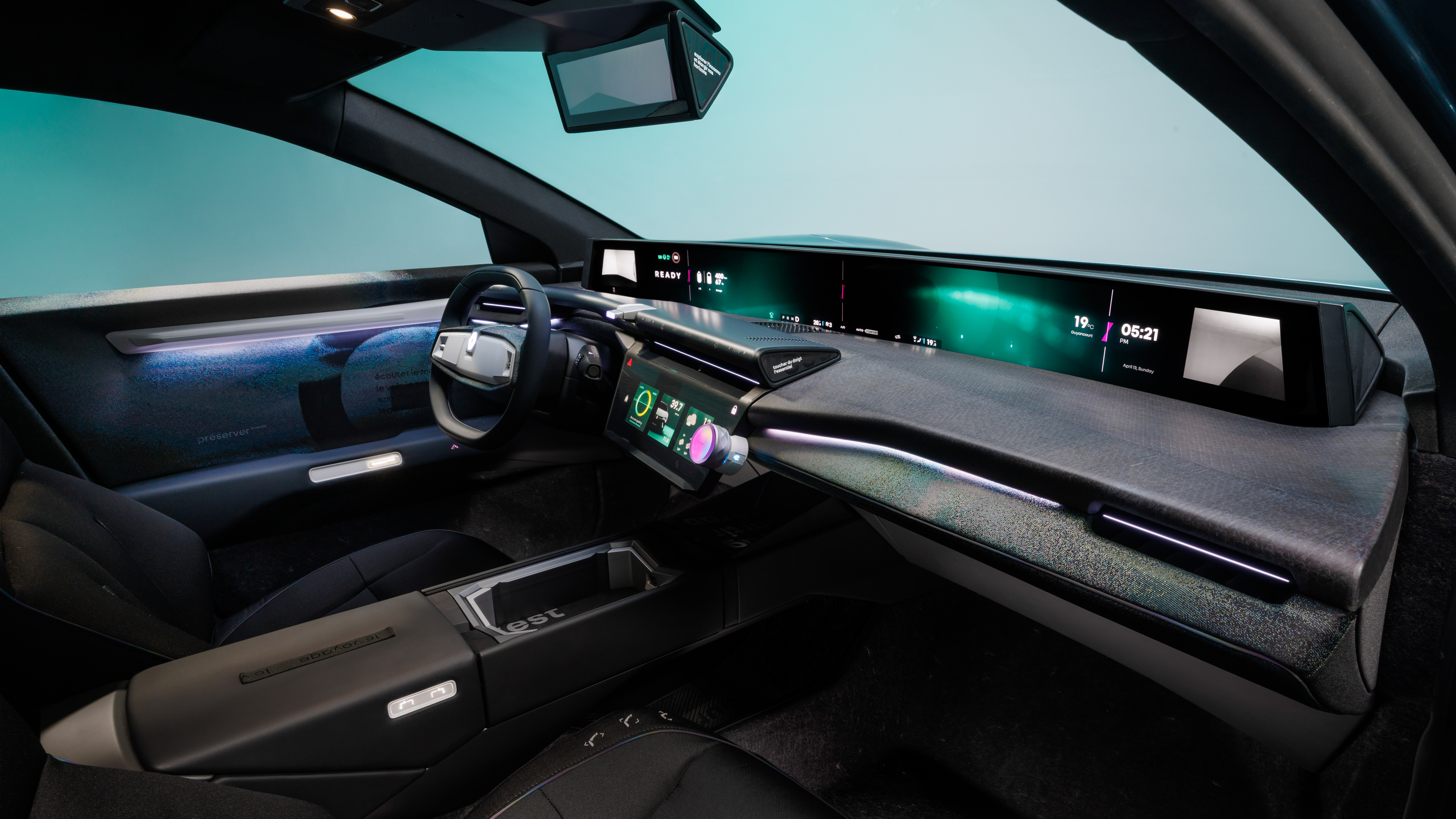
Lastly, the wheels of the Emblème are made from 70% recycled aluminium (including some sourced from old wheels), their plastic trims are 55% recycled, and Michelin says it’s working on tyres that will have a cradle-to-grave Co2eq figure 75% lower than today, by 2035.
Naturally, the Emblème won’t be appearing in your local Renault showroom any time soon. But instead of being a concept car where dramatic design is its be-all and end-all, it’s more of a rolling laboratory fixated on cutting CO2. The various components outlined above are real, with each manufacturer confident of slashing their environmental impact by literal tonnes.
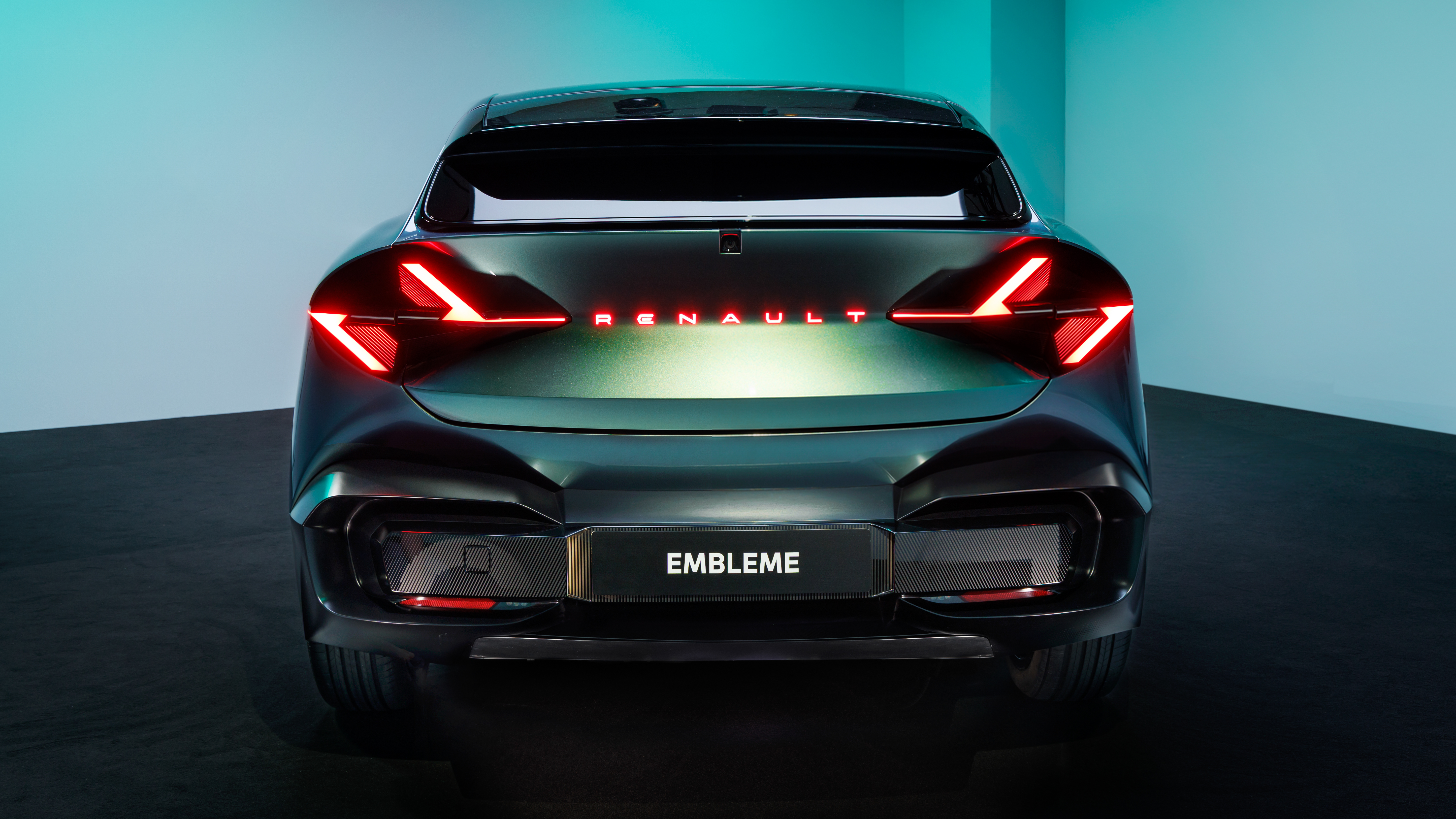
I’m glad Renault isn’t focusing too much on the hydrogen fuel cell, as that seems the least likely aspect to make production, given the lack of infrastructure (and lack of interest from other car makers) today.
The rest of the Emblème project makes plenty of sense, and so too does Renault’s leaning on its Alpine Formula One team for aerodynamic research and the use of digital simulations for testing – something that saves money, time and, of course, CO2.
Pascal Tribotté, project manager for Renault Emblème, said: “We wanted to bring the automotive industry’s ecosystem towards more sustainable mobility. This decarbonisation laboratory is designed to operate without any compromise on all features such as comfort, safety and connectivity. It is the result of an exploratory, horizontal and collective approach.”
Alistair is a freelance automotive and technology journalist. He has bylines on esteemed sites such as the BBC, Forbes, TechRadar, and of best of all, T3, where he covers topics ranging from classic cars and men's lifestyle, to smart home technology, phones, electric cars, autonomy, Swiss watches, and much more besides. He is an experienced journalist, writing news, features, interviews and product reviews. If that didn't make him busy enough, he is also the co-host of the AutoChat podcast.
You must confirm your public display name before commenting
Please logout and then login again, you will then be prompted to enter your display name.
-
 Va-va-voom! Renault’s crazy new EV is an electric Batmobile
Va-va-voom! Renault’s crazy new EV is an electric BatmobileNew Renault Filante Record 2025 is a record-hunting laboratory on wheels
By Alistair Charlton
-
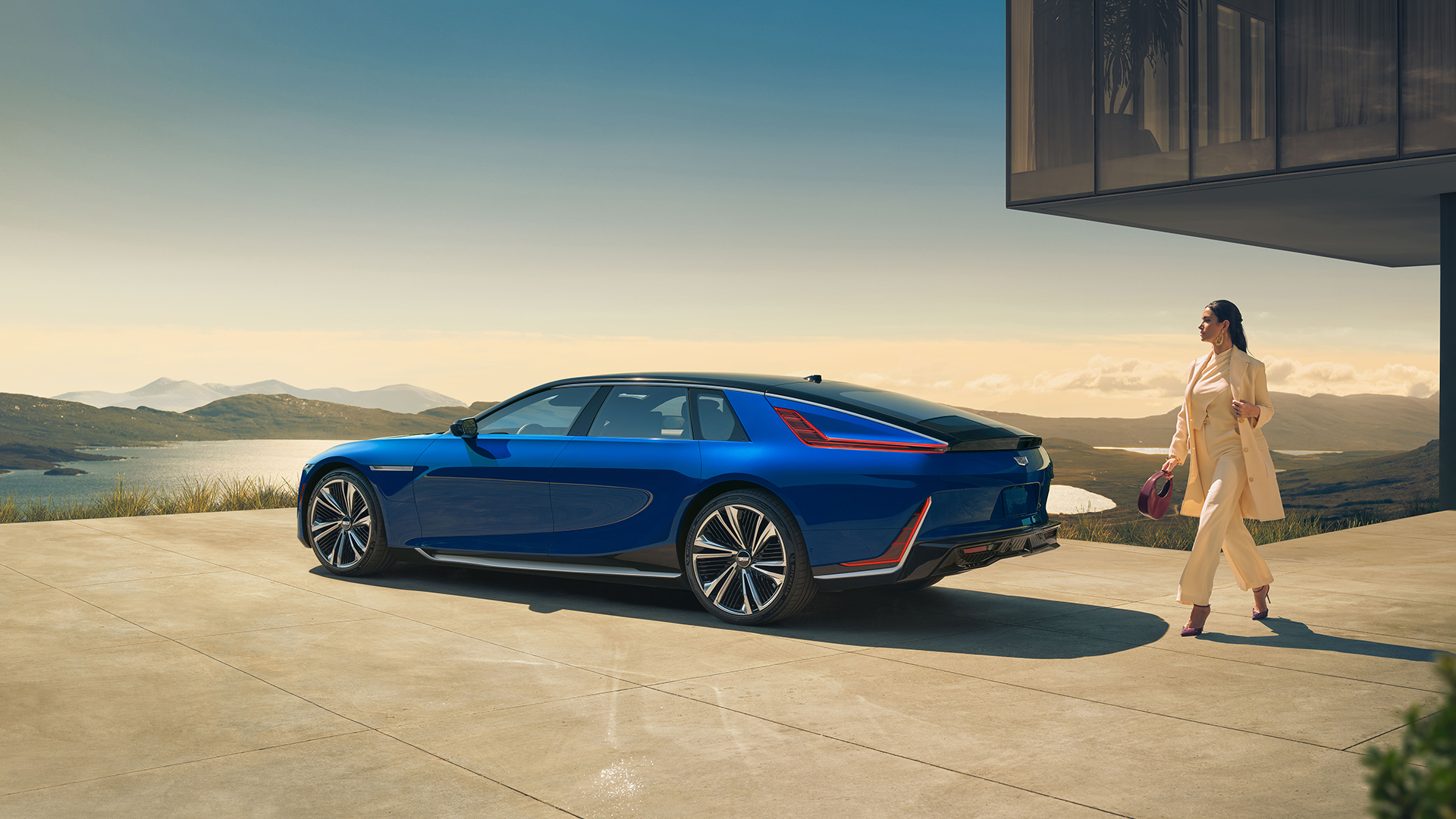 You can now buy this ridiculously opulent Cadillac Celestiq… but it costs as much as a Rolls-Royce
You can now buy this ridiculously opulent Cadillac Celestiq… but it costs as much as a Rolls-RoyceFully bespoke, hand-built EV requires a healthy bank balance and an acquired taste
By Leon Poultney
-
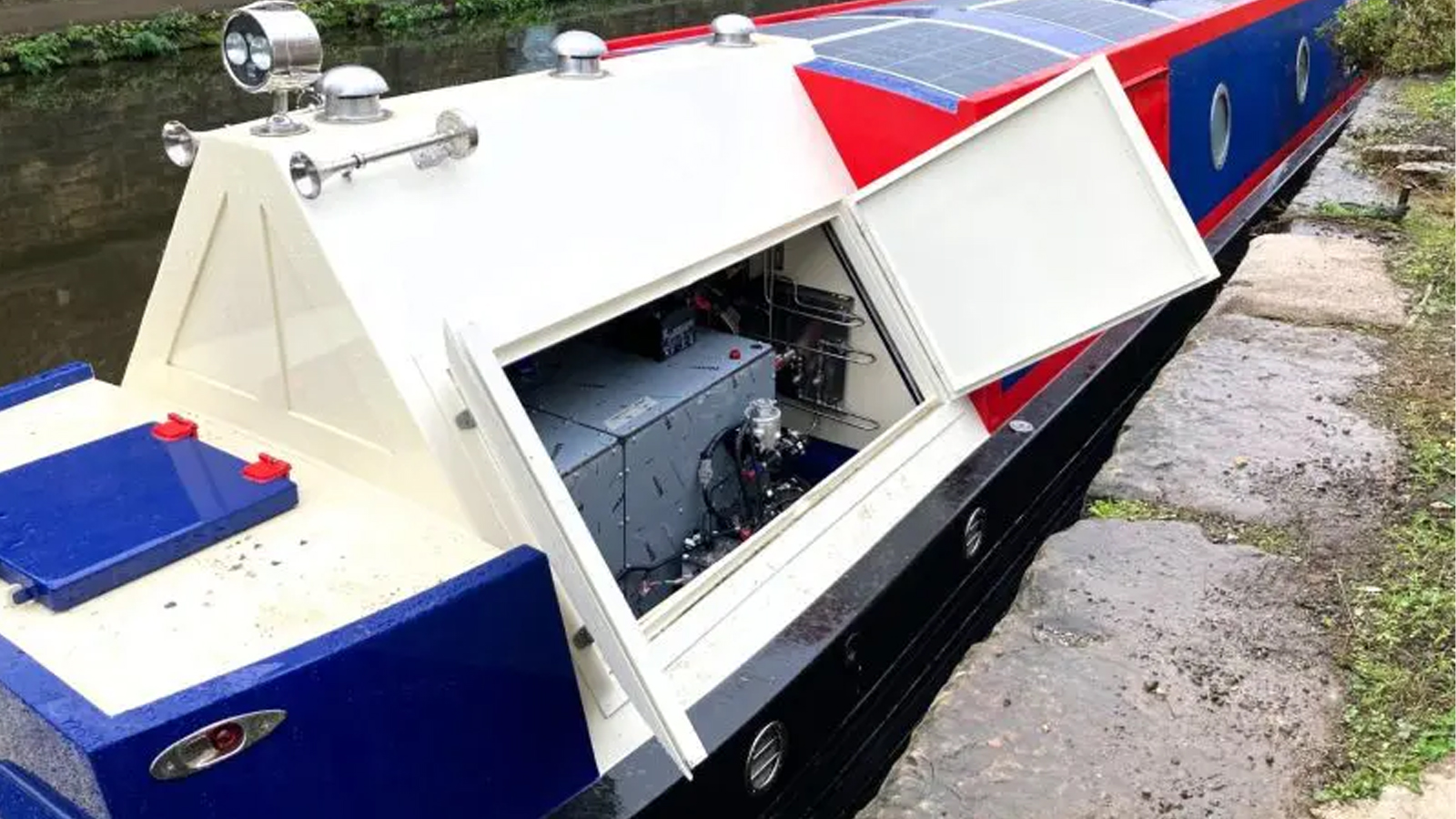 Yes, there really is a hydrogen fuel cell-powered canal boat
Yes, there really is a hydrogen fuel cell-powered canal boatPutting the Hydrogen in H20
By Andy Sansom

